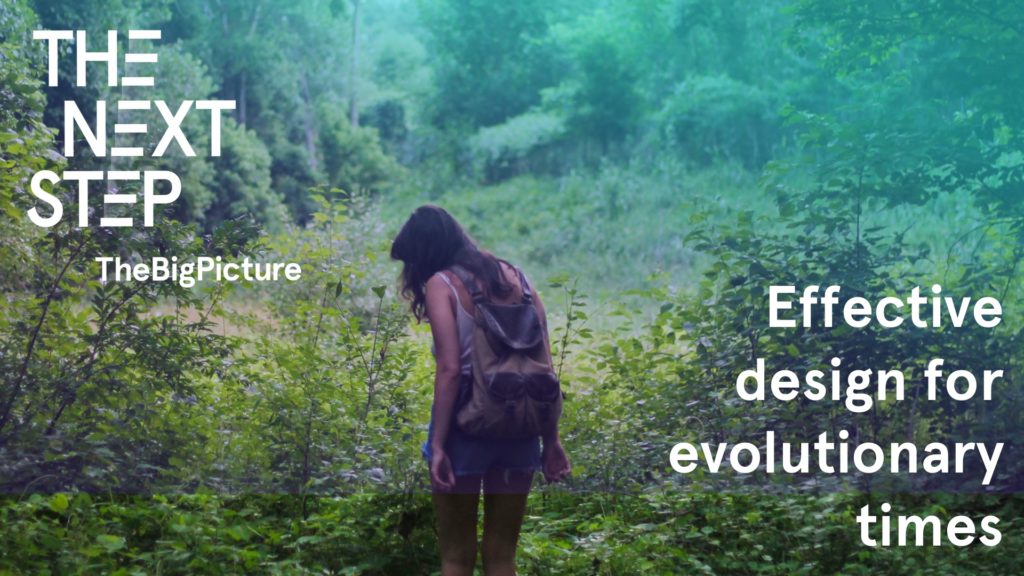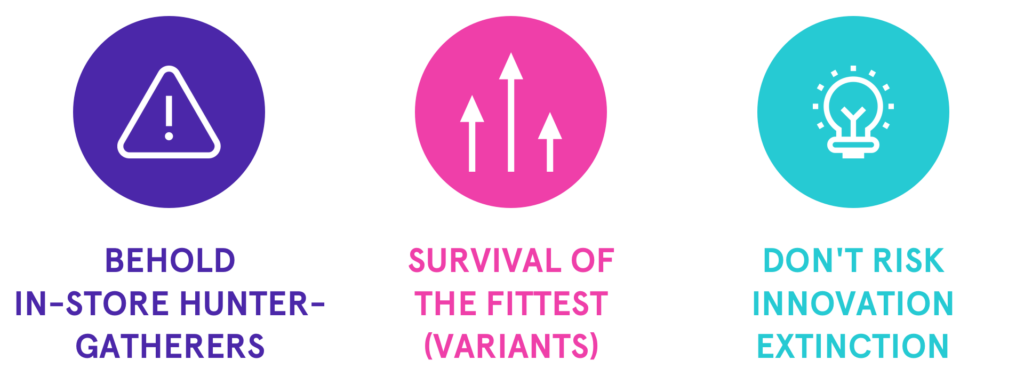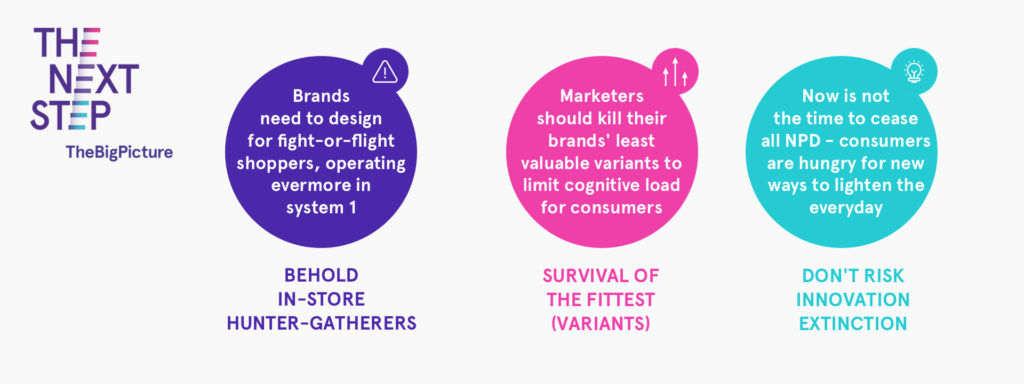The Next Step: Effective design for evolutionary times
02.06.20
No-one knows what next month holds, let alone next year. In ‘The Next Step’, The Big Picture combines our 26 years of experience with live project insights to help you take the next step in brand planning. It’s not going to be perfect, we don’t have a crystal ball, but we hope it sparks thought, inspiration and action!
This week we share our ideas and provocations in a familiar realm that has radically changed in recent months – the shopper experience.
Design for fight-or-flight shoppers, operating evermore in system 1
While sunny parks are mobbed, consumers do not want to be in busy, indoor environments right now… Yet many of us are forced to venture beyond our ‘caves’ for the weekly shop, having missed the online shopping rush. So what does brand design need to do to meet the needs of millions of nervy, hurried shoppers?
Designing for system 1 has never been more important: How Brands Grow illustrated the limited brand loyalty among consumers and recent stock shortages have meant huge numbers of consumers are experimenting and discovering new brands.
When shopping at pace, consumers are not seeing a perfect picture of the shelf and the system 1 brain often disregards the unfamiliar. So can you afford a pack design that doesn’t provide an immediate signpost for twitchy trolley pushers?
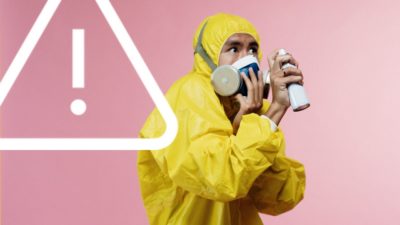
So what are the next steps?
- Blur your eyes and ask yourself, how well does my packaging range distinguish itself within the competitive context? The more grab & go the category, the more important the development of recognisable icons is. This theory, inspired by behavioural economics and pattern theory, is what inspired PatternID – a key feature of our online quant pack testing method, DesignCounts.
- Could this limited foraging time in a more ‘dangerous’ world manifest in greater success for well-known, trusted brands? Picked as beacon-berries from uncertain bushes.
Marketers should kill their brands’ least valuable variants to limit cognitive load for consumers
Recent years have seen brands rapidly expand their ranges, creating ever-more confusion choice for consumers: “do I want ‘All-in-one’ or ‘5-in-1’? Or ‘5-in-1 Titanium’… what’s ‘5-in-1 Titanium+’?”
The ever-satirical and always insightful Mark Ritson talks of the need, when innovating, to ‘kill’ 99 variants before creating one and this has arguably never been more relevant. The imminent recession will force consumers to make shrewd choices, seeking genuine value wherever possible. And needing to assimilate that value fast, rather than spend valuable time deliberating. Combine this with the ingredient, stock and workforce shortages that may limit the number of variants manufacturers can produce irrespective of demand
Behavioural economists have long documented the paralysis choice can create – the oft-used jam experiment (Iyengar and Lepper, 2000) being a prime example, so ask yourself this:
- Is your brand really offering consumers a choice between ‘5-in-1’ and ‘5-in-1 Titanium’ or are you forcing them to choose, adding to the cognitive load of an already stressful environment?
- And will they, echoing the jam experiment, opt to make a simpler choice between 3 options from an Own Label provider… at half the price?
- How can range rationalisation help reduce your consumers’ cognitive load in this time of high stress?
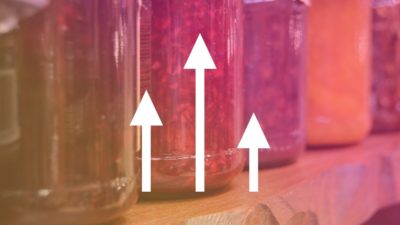
Now isn’t the time to cease NPD, consumers are hungry for new ways to lighten the everyday
Once you’ve removed the ‘clingers-on’ in your brand’s portfolio, hit reset and fire up the thrusters on developing compelling innovations for this new world. We’re never going to return to a world that is a replica of October 2019 but, in The Big Picture’s opinion, many of the macro-trends we saw pre-Covid will simply be accelerated; the ‘internet of things’, plant-based diets and sustainable activism have all been amplified by recent events.
And while we’ve seen an array of reactions among clients in recent months, all totally understandable in such uncertain times, we would warn against curling into a ball when it comes to innovation.
Everyday innovations and the opportunity to try something new can provide delight in a world of restriction and monotony. And in an environment of stress and fear, there is a greater opportunity (even need) for brands to put a smile on consumers’ faces? Until hospitality venues and attractions open again, supermarkets are for many a source of release and experimentation, as the nation moonlights from bedroom offices to become budding baristas, bartenders and bakers.
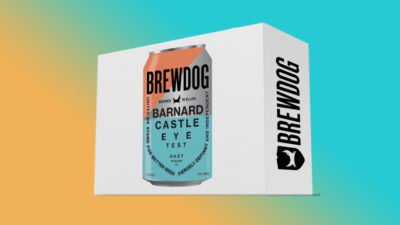
So what are the next steps for innovation?
- How can you develop consumer-centric innovation, like BrewDog, that provides a spark of joy in consumers’ current day-to-day?
- The sweeping boom of Dalgona coffee across Asia is a stunning example of consumers taking a ‘standard’ product and boosting the experience. If brands can act fast and tap into this type of pent-up consumer focus and energy, powerful opportunities can unfold.
And that brings us to the end the first edition of ‘The Next Step’! We’re all taking small steps to adapt to a life lived in the shadow of a pandemic – we hope you found a nugget of inspiration to apply to your world!



